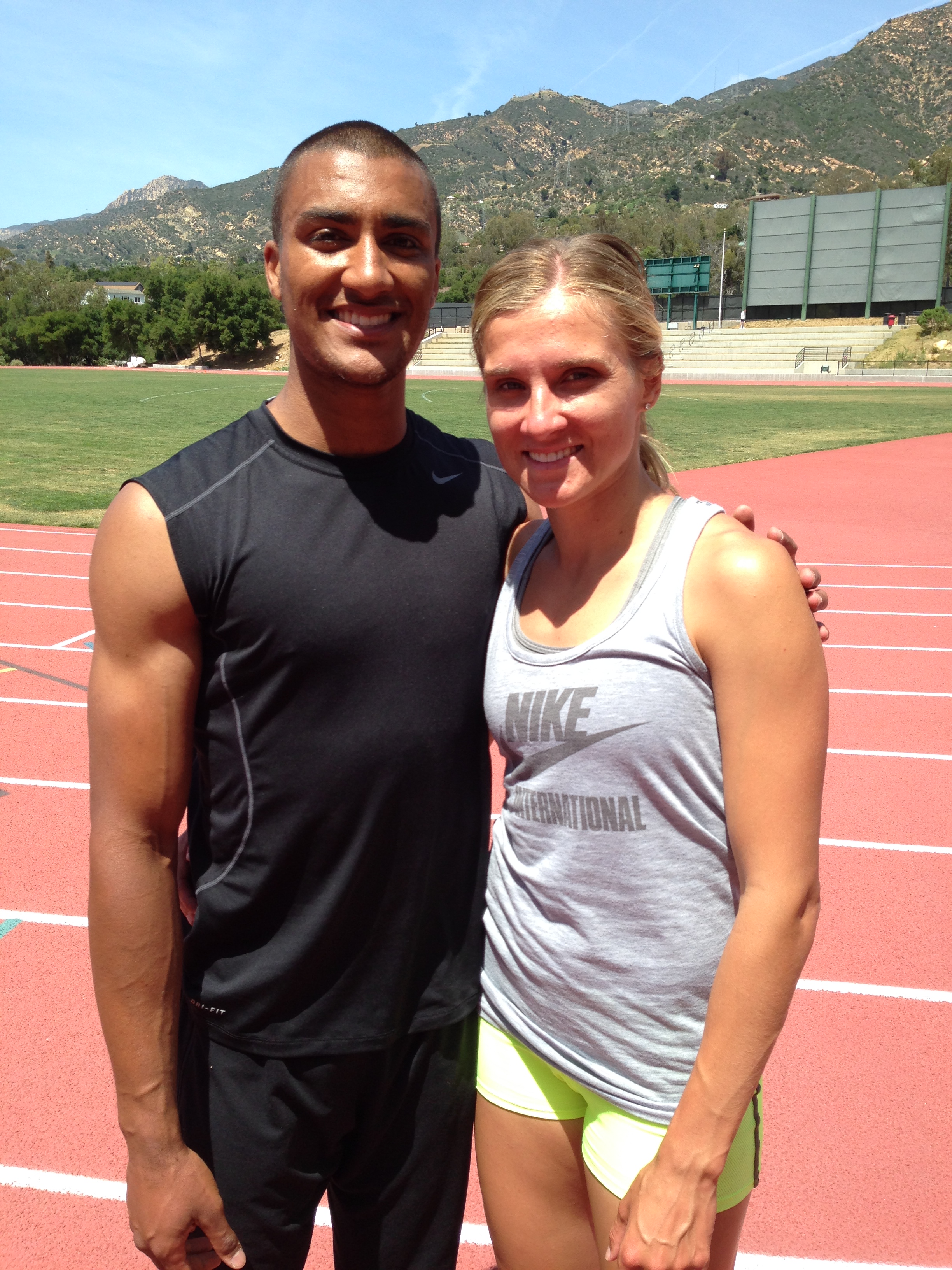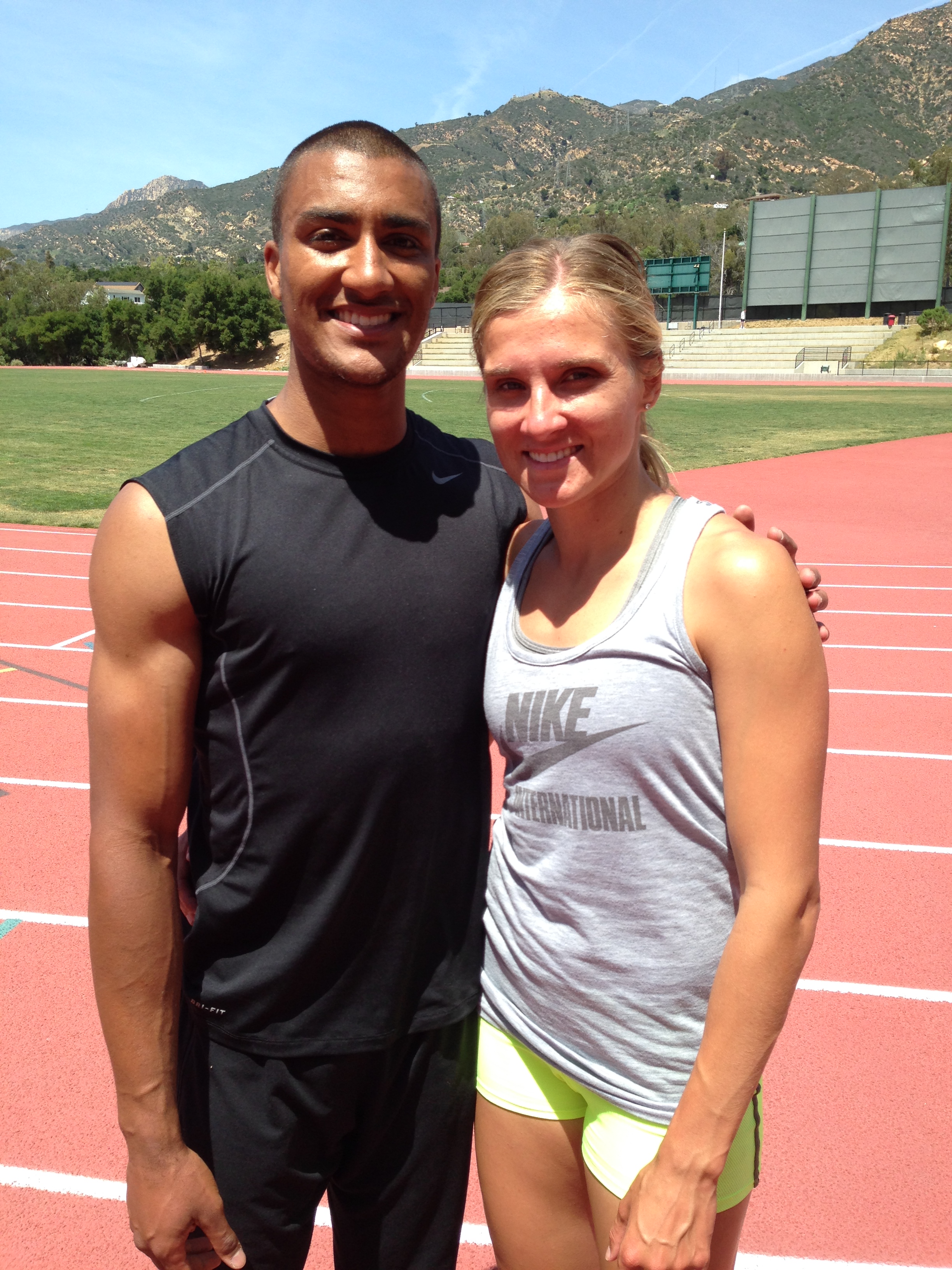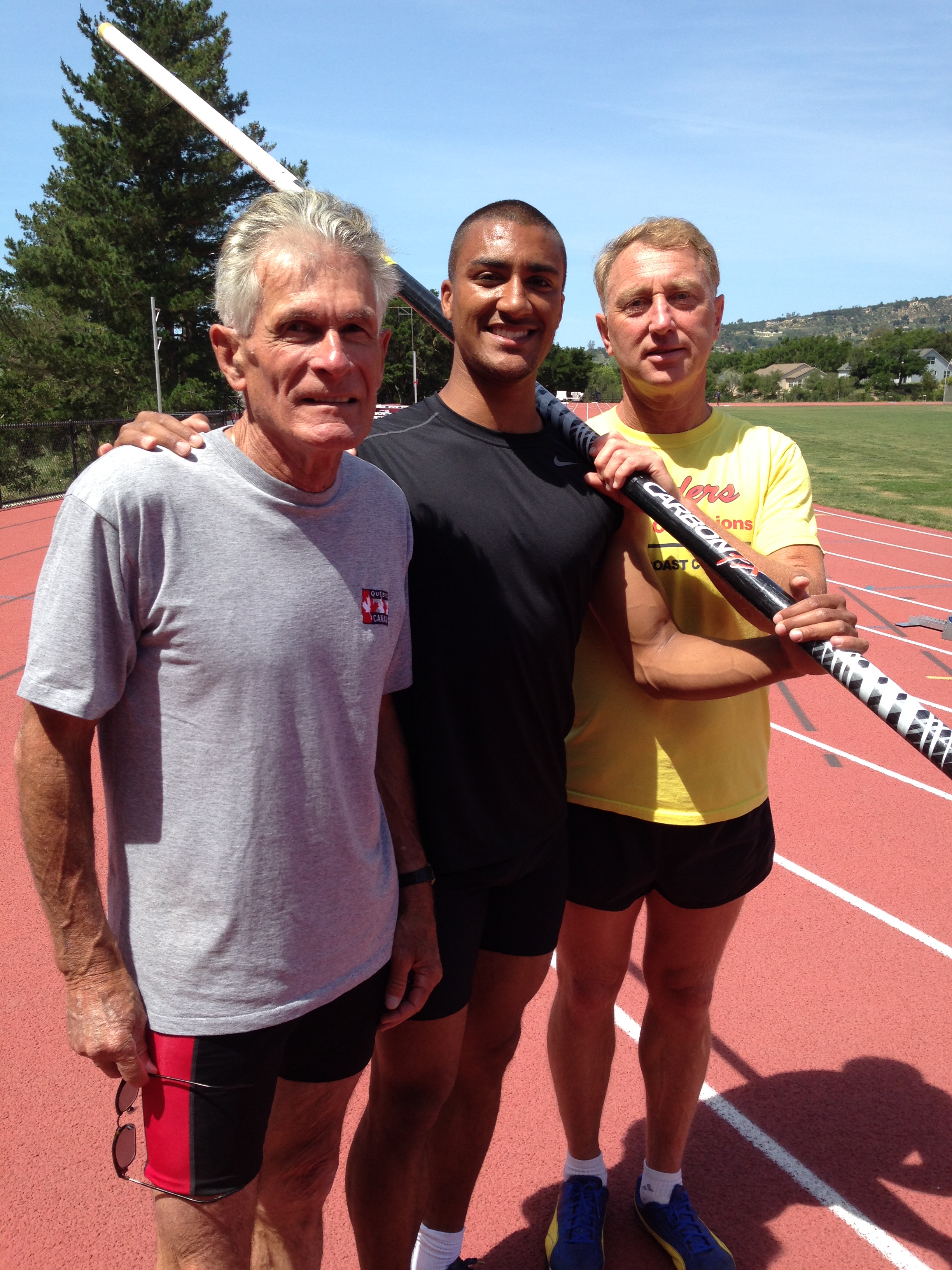The world’s greatest athlete is taking his first outdoor runs of the season in the pole vault. His coach, Harry Marra, is here, of course, at the Westmont College track, in the hills above Santa Barbara, California. His wife, Brianne, herself the reigning indoor and outdoor silver medalist in the women’s versions of the all-around event, is here, too, practicing her javelin throws and running some hard sprints.
Ashton Eaton is the 2012 gold medalist at the London Games in the decathlon. At the U.S. Olympic Trials earlier that year, he set the world record in the event. He is the 2013 Moscow decathlon world champion. He is also the 2012 and 2014 gold medalist in the heptathlon, the indoor version of the multi-discipline event. He holds the heptathlon world record, too, and missed setting it again at the 2014 indoor worlds by one second in the 1000 meters.
On this day, a bungee cord takes the place of the bar at 5 meters, or 16 feet, 4 ¾ inches. Eaton takes his practice runs. He doesn’t go one after the other, in sequence. No. He shares pole vault time, and graciously, with a 54-year-old doctor of holistic health, Victor Berezovskiy, and a 77-year-old clinical psychologist, Tom Woodring.
This scene summarizes perhaps all that is both sweet and unsettling about the state of track and field in our world in 2014.
It’s sweet because the fact that Ashton Eaton would so willingly, humbly take practice runs with these two guys speaks volumes about his character. Obviously, neither is coming anywhere close to 5 meters. It’s no problem. Eaton patiently helps them both with their marks. In turn, they watch his take-off points.
Sweet because Ashton Eaton and Brianne Theisen Eaton – he’s now 26, she’s 25 – are, by every measure, track and field’s It Couple. They are at the top of their games. Yet here they are, at the track, just like everyone – anyone – else, practicing. And practicing some more. And then some more, still.
Because, obviously, that’s how you get better. How even the best get better.
It’s hard work that gets you to the top and for those who have seen track and field tainted these past 25 or so years by far too many doping-related scandals, here are Ashton and Brianne, examples of the right stuff. Never say never about anyone. But Ashton and Brianne? So wholesome, Harry says, and he has been in the business for, well, a lot of years, and seen it all, and he adds for emphasis that they don’t even take Flintstone vitamins.
Ashton follows his pole-vaulting with a series of 400 hurdle splits, trying to get the timing down – how many steps between each? 13? All the way around? Does he cut the hurdle? Float? What’s right? She does her repeat 150s so hard that, when she’s done, it’s all she can do in the noontime sun to find some shade.
This, ladies and gentlemen, is how you rise to the top.
And yet – the questions have to be asked:
Is track all the better because it’s a kind of extended family where one of its biggest names can hang on a sunny morning practice with a 54-year-old and a 77-year-old?
Or isn’t that, in its way, kind of ludicrous?
Does LeBron James practice with a 54-year-old doctor of holistic health?
Do Peyton Manning or Tom Brady run 7-on-7 drills with a 77-year-old clinical psychologist at wide receiver?
It’s not that James, Manning and Brady don’t understand their responsibilities as stars. But this is – practice. This is not a fan meet-and-greet.
What if things were different for track and field? What if the decathlon champ was The Man, the way it was when Bruce Jenner and, before him, the likes of Bill Toomey, Rafer Johnson and others were venerated the way Manning, Brady and James are now?
It’s not just Ashton. Brianne is herself a major, major talent.
Of course, track and field does not hold the same place in the imagination that it once did. Dan O’Brien, the 1996 Olympic decathlon winner, is not The Man the way Jenner was. Bryan Clay, the 2008 Olympic decathlon winner – not The Man the way Jenner was.
And that’s no knock on either O’Brien or Clay.
Times simply have changed. Jenner won in Montreal in 1976. That is a long time ago.
Yet in Ashton and Brianne, track has a marquee couple. Here are breakout stars in the making: doping-free, handsome, articulate, passionate about advancing track and field the same way Michael Phelps has always been for swimming. Phelps is on bus stop advertisements in Shanghai. Why aren’t these two, for instance, featured on the bright lights looking out and over Times Square?
For sure that would be better for the sport.
Would it be better for Ashton and Brianne – and Harry?
It’s all very complex.
Right now, track and field is, for all intents and purposes, Usain Bolt.
Isn’t there room for Ashton and Brianne, too?
The scene at Westmont this weekday morning is all the more striking because it comes amid the news Phelps will be racing again. The media attention enveloping Phelps is, predictably, striking.
Yes, Phelps is the best in the world at what he does.
Then again – so are these two.
Yet here are Ashton and Brianne and Harry – and, for that matter, a Canadian delegation that includes Damian Warner, the 2013 world bronze medalist in the decathlon – going about their business at Westmont, along with the others at the host Santa Barbara Track Club, with no interference, no autograph requests, no attention.
Phelps has always sought to live a normal life. But let’s be real: could Phelps walk around Westmont – or, for that matter, any college campus in the United States – with the same quietude?
After practice, there is a quick session in the Westmont pool. No one swims like Phelps. Then it’s over to the Westmont cafeteria, where lunch is five bucks and the beet salad is, genuinely, awesome.
Brianne says they consistently make a point of reminding themselves that these are the best days of their lives – to live, truly live, in the present and know that they are experiencing special moments.
“To somebody who is in it more for fame or money,” Brianne says, “they would have a lot different outlook on this.”
“The goal is to improve yourself,” Ashton says.
“The goal is excellence,” Harry echoes.
So sweet.






